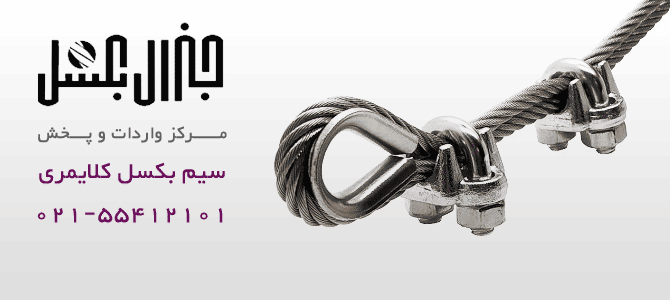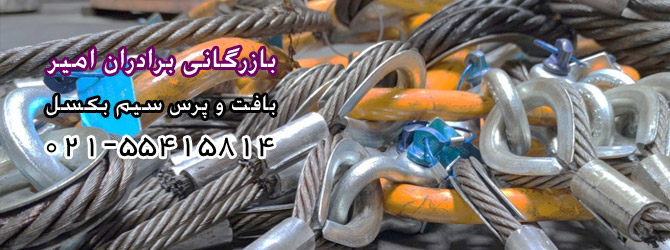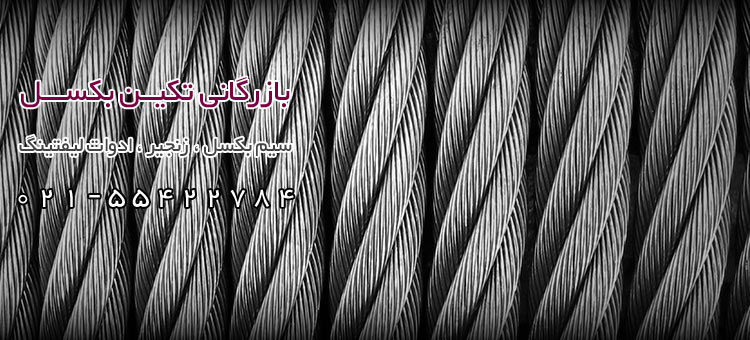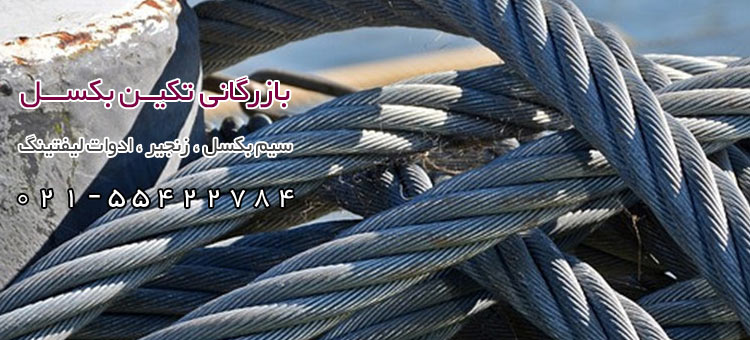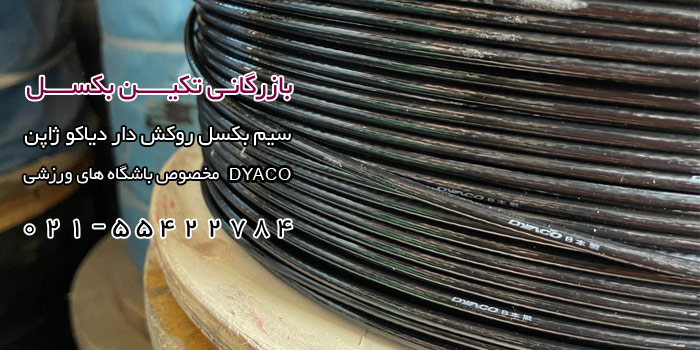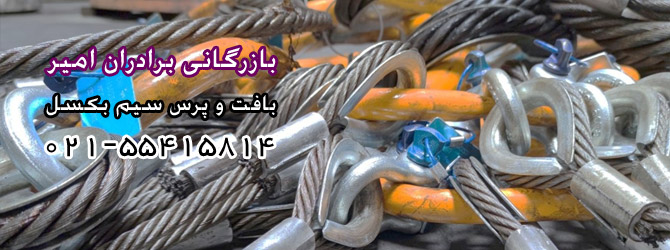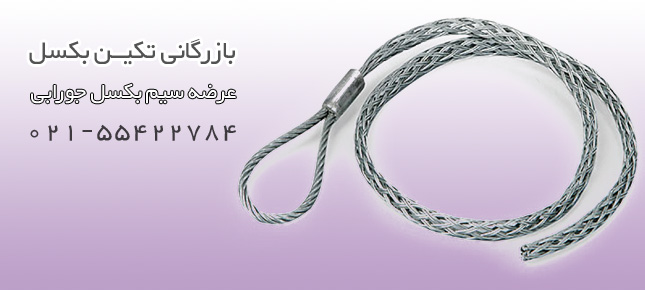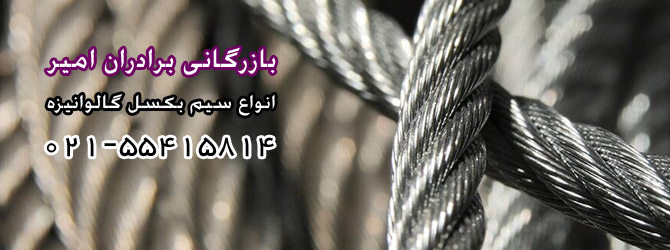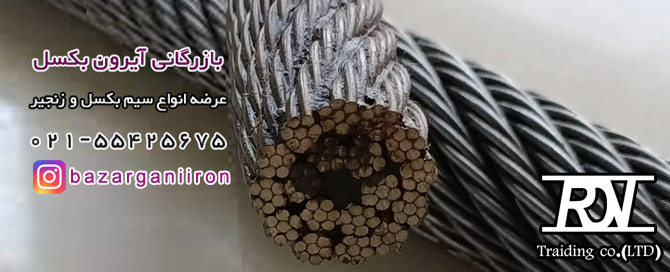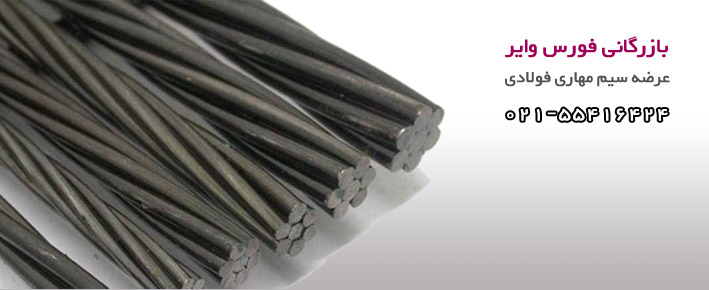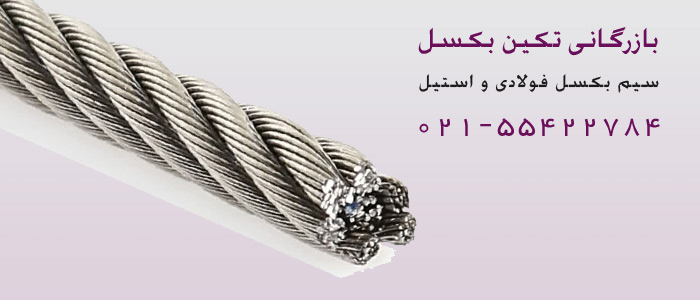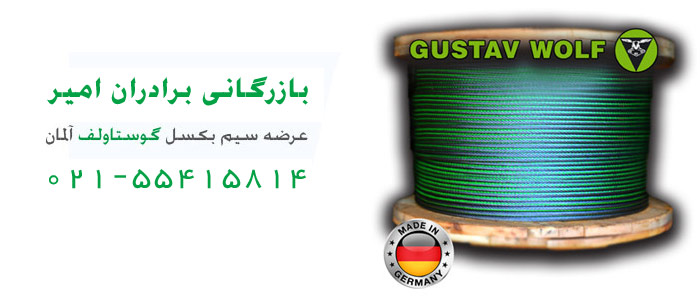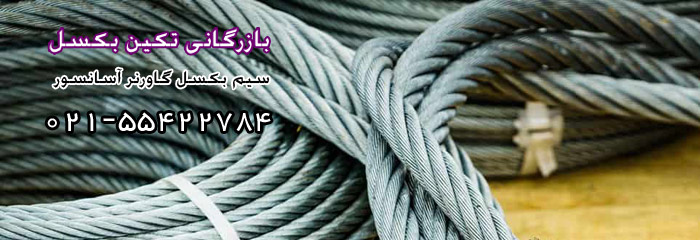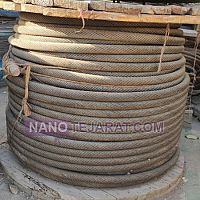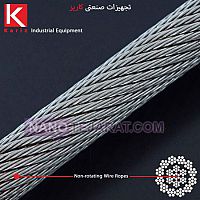
Viewed : 69269
- Tel
- 021-55400161
- | Cell
- 09126645202

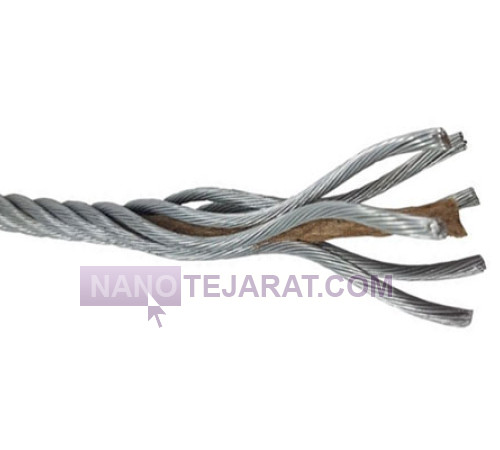
| ,Importer,,Wholesaler,Retailer | |
| Tehran | |
| 021-55400161 | |
| kariz_ie | |
| info@karizie.com | |
The steel rope, which we know as tow wire in Iran, is a steel rope, which is made of several steel strands woven together, which is also made of several wires. Steel is made around a central wire.
Wires are classified into two general categories: "steel core wire" and "hemp core wire". Each of these two types has its own uses according to the way of use and the place of use.
What is hemp cord towing?
In some steel ropes, according to the environmental conditions and technical conditions that are considered in moving the load, or the conditions of the machine in which the towing wire is used, we are required to use this type of towing wire.
Hemp ropes are divided into two categories: natural fibers and synthetic fibers.
NFC: Natural Fiber Core tow rope with natural hemp: this type of tow rope has a hemp core made of natural fibers of the hemp plant. Among the features of this type of fiber is the ability to absorb grease in the core of the towing wire, which causes the release of the grease stored in the hemp under high pressures and lubricates and reduces the abrasion of the steel wires to each other.
SFC: Synthetic Fiber Core: This type of tow wire has a core made of polymer fibers. In fact, the steel rope woven in its core has a rope woven with polymer fibers called polypropylene. One of the characteristics of these types of ropes is the non-absorption of I by polypropylene, which makes the steel rope not rust and rot from the inside.
What is Haft La Kanaf towing wire?
In this type of tow wire, in addition to the presence of hemp core in the rope, each of the braided strands also has a hemp core. Hence, this type of tow wire is one of the cheapest and softest tow wires available in the market and is a suitable option for construction lifts.
Some important and common structures of steel rope tow wire:
Towing wire 12*6 hemp seed seven hemp
Towing wire 6*19 hemp seed
Towing wire 6*37 hemp seeds
Towing wire 36*6 hemp seed
Towing wire 6*25 hemp seeds
Towing wire 8*25 hemp seed
Towing wire 19*8 hemp seed
The main application of wire ropes in oil-gas-petrochemical, steel, marine and shipping industries, mining, quarrying, civil and construction, well drilling, elevators, poultry farming, sports and many industries that deal with lifting and moving loads. is.
Types of tow wire:
Elevator cable
Crane towing wire
Lifting tow wire
Drilling tow wire
Quarry towing wire
Marine tow wire
Netab towing wire - snakeskin towing wire
Steel tow wire
Towing wire
Coated tow wire
Sling towing wire
What is wire?
The main material is Wire Rod, which is cold-rolled into wires with different diameters and resistance levels.
The wire is either galvanized white or stainless steel anti-rust. Galvanized wire gives the rope more protection against corrosive environments. For severe cases, stainless steel rope is used. Steel wire ropes can also be made with plastic coating.
What is a discipline?
Strands are made up of individual wires that are placed around the core in one or more layers and are usually of one of the following structures:
Ordinary:
All wires are the same size.
Seal Seale S:
The flood structure has two layers of wires around a central wire, the number of wires in each layer is the same, but the size of the wires in the inner layer is different from the size of the wires in the outer layer. All the wires in each layer have the same diameter, and the string is designed so that the outer wires, which are larger, are placed in the space between the inner wires, which are smaller.
19 Seale: 1-9-9 strand
Warrington W:
Basically, Warrington is a 2-layer structure, where the wires in the inner layer are the same and the same size, and in the outer layer, two wire diameters are alternately large and small. The wires of the larger outer layer are placed in the gap between the two wires in the inner layer, which is created in the form of a valley, and the wires of the smaller outer layer are placed on the wires of the inner layer, which is called the crown.
19 Warrington: [1-6-6+6] strand
Warrington-Seale WS:
When a string is formed using two or more of the above structures, it is called a "combined pattern". It is basically a Seale string in its first two layers. The third layer uses the Warrington principle, and the outer layer is a typical Seale pattern of equal-sized wires.
49 Seale Warrington Seale: [1-8-8-8+8-16] strand
Filler F: This structure has two layers of wires of uniform size around a central wire, the inner layer having half the number of wires of the outer layer. Small filler wires Filler are placed in the inner layer in the same number as the inner layer and in the gaps created between the wires.
25 Filler Wire: 1-6-6f-12 strand
Compacted:
Compact tow wire is a standard rope that has undergone a special process. The rope is either passed through a mold or rollers on a special machine to compress the rope. Standard rope strands are compressed during the manufacturing process. This process causes the inner threads, the outer threads, or both to be compressed. A standard plain compression rope has a normal inner core but compressed outer strands. Compression smoothes the surface and increases the contact area of all threads.
Standard rope strands are round, but after the compression process, the wires and strands are flattened, resulting in a much smoother rope with a smaller diameter.
What is the core of a steel rope?
The strands of a rope are spun around a core of fiber, steel or solid plastic.
FC is used where strands are spun on a fiber core.
The fibrous brain itself is divided into two categories:
Natural fibers Natural Fiber Core: NFC
Synthetic Fiber Core SFC
The natural fiber is the plant hemp and the synthetic fiber is a polymer material called polypropylene PP.
If the rope is exposed to high working temperature, hard strains, high working speed, hard pressure on drums and blocks, etc., ropes with steel cores should be selected. which makes the rope keep its shape better and creates a better distribution of tension in each of the wires.
If the steel core of the rope consists of a strand, the term WSC is used.
If the steel core of the rope consists of a steel rope, the term IWRC is used.
Some steel wire ropes can have a plastic encased core, which increases rope stability and also reduces wear and corrosion in and around the core.
What is the direction of the steel ropes tow wire?
Ordinary hand lay
The orientation of the outer layer of the wires in the strands is opposite to the orientation of the strands in the rope. This type of tissue is more resistant to twisting and is less destroyed by crushing and distortion.
Langs lay
The direction of placing the outer layer of wires in the strings is the same as the direction of the strings in the rope. The advantage of using lanyards is that the rope provides a better wear surface during use and can therefore be expected to last longer in many cases. Langes ropes produce relatively high torque values under working conditions and should not be used in operations where one end of the rope is free to rotate or where there is a possibility of problems arising from rope rotation. In contrast to this issue, Langs ropes are a suitable option in places such as the cable car where the rope itself needs to have a rotational movement.
Right hand lay
The strands are wrapped right around the core. Right-handed rope is the most common weave direction in rope.
Left hand lay
The strands are wrapped around the core to the left.
What is non-rotating steel rope Non Rotating/Rotation Resistant or snake skin?
The term "twist resistant steel rope" refers to a type of wire rope that is designed to resist the tendency to twist or twist under pressure. Twist resistant ropes are made of many layers of strands. Each layer is placed in the opposite direction of the next layer, so that the torque in different layers is superior to each other. The inherent nature of twist-resistant rope designs places certain limitations on their use and necessitates special handling requirements not seen in other types of rope.
Twist-resistant wire rope is designed to minimize rotation of the load during the lift. When lifting with other types of steel ropes, elongation and rotation are normal. This can cause the load to spin, possibly out of control, which is a serious safety issue. Therefore, torsion-resistant steel rope is essential for any application where a load is lifted by a single strand of rope.
Twist-resistant wire rope is created by twisting the outer layer of the rope in the opposite direction to the inner layers of the rope. When in tension, the opposing rotational forces cancel each other out.
Steel rope covers coated towing wire:
A tow wire is an extremely strong tool that is configured and designed to withstand the pressure applied to it. In most applications, steel rope has to withstand extreme stress and strain. For these reasons, coatings have been created to protect the wire rope against wear, corrosion, ultraviolet rays and harmful chemicals.
There are three main types of coatings used to protect the tow wire:
Polyvinyl chloride PVC
Polypropylene PP
nylon polyamide
Of the three types, PVC is the most popular.
PVC
PVC is very popular due to its versatility, flexibility and low cost. Its operating temperature is between -30°F -35°C and 180°F 80°C with a hardness of 90.
Polypropylene
In cases where there are harsh and dangerous working conditions, polypropylene is the choice that can protect the wire rope against corrosion and chemical washing. In addition, it is resistant to impact and wear. Polypropylene is a hard, rigid, crystalline thermoplastic made from a propene monomer that is flexible and inexpensive.
Nylon
Nylon is extremely wear-resistant, which makes it ideal for use in cold environments. It is not as flexible as PVC, but it has excellent protection against corrosion and impact. It has excellent chemical resistance at temperatures between -65°F -54°C and 230°F 110°C and is available in a wide range of colors or can be clear.
What is the property of length increase in steel ropes?
Any set of wires twisted in a helix as a strand or a steel rope-tow, when subjected to a tensile load, can be in three distinct phases depending on the magnitude of the applied load. Expand:
Phase 1: Initial expansion
Phase 2: Elastic expansion
Phase 3: Expansion of plastic
Phase 1: Initial Extension
This stage of rope expansion depends on the structure of the rope and can be explained as follows:
When loading a new product, the wires are reduced in diameter. This reduction in diameter creates additional wire length.
Phase 2: Elastic extension elongation
After phase 1, the rope expands in a manner that approximates Hookes law, i.e., stress is proportional to strain.
The proportionality factor is usually a numerical constant called the modulus of elasticity E-module.
Elastic elongation can be calculated as follows Hookes law:
Elastic extension mm = W x L / E x A
W = applied load kg
L = rope length mm
E = elastic modulus kg/mm2
A = area of rope - circumscribed circle mm2
The modulus of elasticity varies with different rope structures. Due to the structure factors, wire dimensions and many other factors, the E module varies between different tow wires with the same structure and dimensions. If the exact E-modulus of a particular rope is required, a modulus test should be performed on that rope. The elastic extension is valid until the elastic limit is reached. When the load exceeds this limit, extension takes place according to phase 3. The elastic limit is defined as the greatest strain at which the rope returns to its original length when unloaded.
Definitions of Breaking Load
Minimum breaking load Minimum breaking load-MBL
The minimum breaking force minimum breaking load, in kilonewtons, is equal to the minimum force that causes the rope to break.
What are the methods of increasing the tensile strength of wire ropes?
The tensile strength of metal parts depends on two factors, namely the chemical compounds used in the parts alloy and the second, heat treatment. One of the main reasons for choosing steel alloys in the production of industrial parts such as wire ropes, bearings, chains and in general tools that face high tensile, abrasion and thermal stresses is the ability to change the amount of tensile by changing the compounds and performing heat treatment. . Increasing the percentage of carbon in the steel structure to a certain extent is one of the simple ways to increase tensile strength.
The heat treatment performed on metals, which includes multiple stages of cooling and heating, taking into account three confidential factors: speed of cooling and heating, duration of preservation at different temperatures, and order of operation, which is confidential for each factory and in accordance with the production technology. Methods of increasing the tensile strength of metals. During the heat treatment, the internal vectors and crystals of the metal compounds are aligned and their tensile strength increases greatly. Unlike the chemical compounds used in metal alloys that are accessible by analysis, tensile and its increasing methods are not accessible in any way.
History of tow wire:
The modern steel wire rope was invented by the German mining engineer Wilhelm Albert between 1831 and 1834 for use in mining in the Hartz Mountains in Clausthal, Lower Saxony, Germany. This product was quickly adopted by the craftsmen of the time because it showed more resistance than ropes made of hemp or metal chains.
Wilhelm Alberts first ropes consisted of three strings, each string consisting of four wires. In 1840, Robert Stirling Newall improved this product process. In America, wire rope was produced by John A. Roebling, which began in 1841, and was the basis of his success in the construction of suspension bridges. Roebling introduced a number of innovations in wire rope design, materials and construction. Josiah White Josiah White and Erskine Hazard Erskine Hazard, the original owners of the Lehigh Coal & Navigation Company Lehigh Coal & Navigation Company, built a tow wire factory in Mauch Chunk, Pennsylvania in 1848 due to technological advances in mining and railroads.
In the late 19th century, steel rope systems were used as a means of transmitting mechanical power, including for new cable cars. The cost of steel rope systems is one tenth more and the friction losses are lower than the line shaft or power transmission shaft. Because of these advantages, steel rope systems were used to transmit power over distances of several miles or kilometers.
About Kariz industrial equipment:
Kariz Industrial Equipment is a supplier of all kinds of steel ropes, chains, chain fittings, manual and electric cranes and all lifting tools and fittings in Iran.
Import and supply of all steel towing wire, hemp core and stainless steel, all kinds of iron, dry, steel chains and anchor chains, all chain connections including all types of hooks, shegels, restraints and sling rings used in oil-gas-petrochemical industries. Construction, steel, drilling, crane, elevator, sports, etc. are carried out in this complex.
Kariz Industrial Equipment has set up a specialized center for this industry with the aim of providing consulting services and providing goods in the field of lifting and moving goods as safely as possible, and hopes to take a positive and constructive step towards realizing the goals of the craftsmen by providing the best possible services. Take away our beloved country Iran. In this collection, honesty, transparency, compliance with safety principles and preservation of the health of the environment are at the forefront of all matters, and it is tried to achieve the level of lifting services by observing the above central principles not only for the supply of goods, but also by applying knowledge equal to todays knowledge. brought to the world level.
This collection has the possibility of providing the latest services and products made in European and East Asian countries, as well as high-quality domestically produced products.
WEBSITE: Steel Wire Rope Iran

